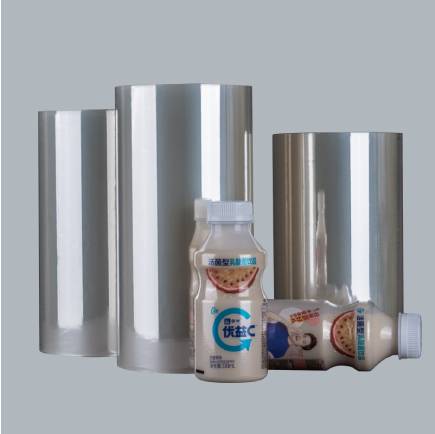The Benefits of Printed Shrink Film
In a world where packaging plays a vital role in marketing and preserving products, printed shrink film has emerged as a versatile and effective solution. This innovative packaging material combines the benefits of shrink packaging with the power of branding and communication. In this article, we'll explore the many benefits of printed shrink film, from increased product visibility to reduced packaging waste.
Chapter 1: What is Printed Shrink Film?
Before delving into the benefits of printed shrink film, it's important to understand what printed shrink film is. Printed shrink film, also known as shrink sleeves or shrink labels, is a packaging material made from polyvinyl chloride (PVC), polyethylene (PE) or polypropylene (PP). These materials are printed with vivid graphics, text and branding elements using high-quality printing techniques such as gravure, flexographic or digital printing. Once the product is wrapped in the film, heat is applied, causing the film to shrink and tightly conform to the shape of the product, resulting in a seamless and visually appealing package.
Chapter 2: Enhancing product awareness and brand image
One of the outstanding advantages of printed shrink film is its ability to enhance product awareness and brand image. Unlike traditional labels or packaging, shrink film covers the entire surface of the product, allowing for 360-degree decoration. This provides ample space for product information, eye-catching design and branding elements that capture the consumer's attention.
Eye-catching graphics: Printed shrink film allows for high-quality, full-colour printing with crisp graphics and vibrant colours. Attention to detail can make your product stand out on shop shelves and increase its appeal to potential buyers.
Product information: You can add basic product information, such as ingredients, directions for use and nutritional facts, right on the shrink wrap. This helps consumers make informed decisions while reducing the need for additional packaging.
Tamper-proof packaging: Shrink wrap acts as a tamper-proof seal, giving customers peace of mind that the product has not been opened or tampered with prior to purchase. This enhances product security and trust.
Brand Consistency: Consistency is the key to branding. Printed shrink film allows you to maintain a cohesive brand image throughout your product line, which enhances brand recognition and loyalty.
Chapter 3: Packaging Versatility
Printed shrink film is versatile and can accommodate a wide range of product shapes and sizes. Whether you're packaging individual items, bundles or irregularly shaped products, shrink film can fit them, providing a tight fit and protecting them during shipping and storage.
Customised: Shrink film moulds fit the contours of the product, reducing excess packaging and minimising wasted space in shipping containers. In turn, this saves costs in transport and storage.
Protection from external factors: Shrink film acts as a protective barrier against moisture, dust and contaminants. This can extend the shelf life of products, especially those that are susceptible to environmental factors.
Multiple Packaging: Printed shrink film is perfect for bundling multiple items together. This is commonly seen in the packaging of beverage bottles, canned foods and promotional packages.
Chapter 4: Sustainability and Packaging Waste Reduction
As the world becomes more aware of environmental issues, printed shrink film has become a more sustainable packaging option than some alternatives. Here's how it can contribute to a greener future:
Reduced material use: Shrink film typically requires less material than traditional packaging methods such as cardboard boxes. Reduced material use means lower production costs and reduced environmental impact.
Recyclability: Many types of shrink film are recyclable, making them an environmentally friendly option. Recycling facilities can dispose of PVC, PE and PP materials, reducing the amount of plastic waste in landfills.
Lightweight: Shrink film is lightweight, reducing carbon emissions associated with transport. Its compactness also maximises the use of containers, further reducing the carbon footprint of logistics.
Energy efficiency: Shrink film requires less energy to produce than alternative packaging materials such as glass or metal. This reduces the overall energy consumption of the packaging industry.
Chapter 5: Cost-effectiveness
In addition to the sustainability benefits, printed shrink film can provide cost-benefit advantages for businesses:
Reduced labour costs: Shrink film packaging typically requires fewer hours of manual labour than other packaging methods. This means cost savings in terms of labour expenditure.
Reduced transport costs: The lightweight and compact nature of shrink film packaging can reduce transport costs, especially over long distances.
Minimised storage space: the ability of shrink film to adapt to the shape of the product reduces the need for excess storage space, thus optimising warehouse efficiency.
Inventory management: shrink film can be printed on demand, reducing the need for large quantities of pre-printed packaging materials and minimising the risk of packaging stock becoming obsolete.
Conclusion
Printed shrink film is transforming the packaging industry by providing a dynamic and sustainable solution to improve product visibility, brand recognition and cost efficiency. Its adaptability to a wide range of product shapes and sizes, tamper-resistant properties and environmental attributes make it ideal for businesses looking to make a positive impact on profits and the environment.
As consumer preferences continue to evolve, the versatility and eco-friendliness of printed shrink film makes it a packaging solution that not only meets today's needs, but paves the way for a more sustainable and visually appealing future in product packaging .


Comments
0